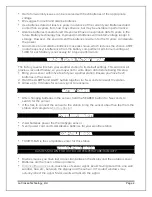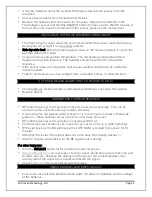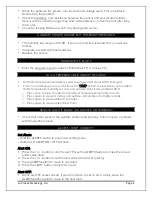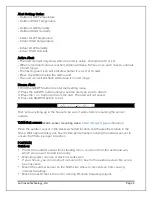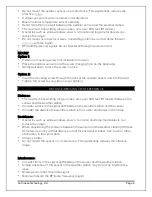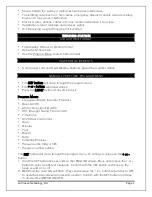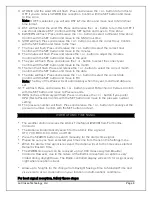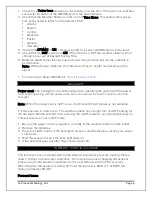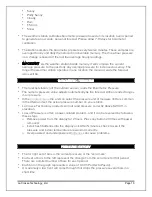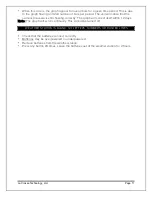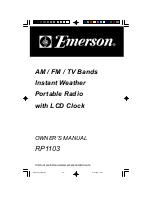
La Crosse Technology, Ltd.
Page 6
•
Do not mount the outdoor sensor on a metal fence. This significantly reduces the
effective
•
Outdoor sensor are water resistant, not waterproof.
•
Mount outdoor temperature sensor vertically.
•
Avoid more than one wall between the outdoor sensor and the weather station.
•
The maximum transmitting range in open air is over 300 feet (91 meters).
•
Obstacles such as walls, windows, stucco, concrete and large metal objects can
reduce the range.
•
Do not mount near electrical wires, transmitting antennas or other items that will
with the signal.
•
RF (radio frequency) signals do not travel well through moisture or dirt.
MOUNT
Option 1:
•
Install one mounting screw (not included) into a wall.
•
Place the outdoor sensor onto the screw (hanging hole on the backside).
•
Gently pull down to lock the screw in place.
Option 2:
•
Insert the mounting screw through the front of the outdoor sensor and into the wall.
•
Tighten the screw to snug (do not over tighten).
DISTANCE/RESISTANCE/INTERFERENCE
Distance:
•
The maximum transmitting range in open air is over 300 feet (91 meters) between the
sensor and the weather station.
•
Consider what is in the signal path between the weather station and the sensor.
•
Consider the distance the weather station is from other electronics in the home.
Resistance:
•
Obstacles such as walls, windows, stucco, concrete, and large metal objects can
reduce the range.
•
When considering the distance between the sensor and the weather station (300 feet,
91 meters open air) cut that distance in half for each wall, window, tree, bush or other
obstruction in the signal path.
•
Closer is better.
•
Do not mount the sensor on a metal fence. This significantly reduces the effective
range.
Interference:
•
Consider items in the signal path between the sensor and the weather station.
•
Simple relocation of the sensor or the weather station may correct an interference
issue.
•
Windows can reflect the radio signal.
•
Metal will absorb the RF (radio frequency) signal.


